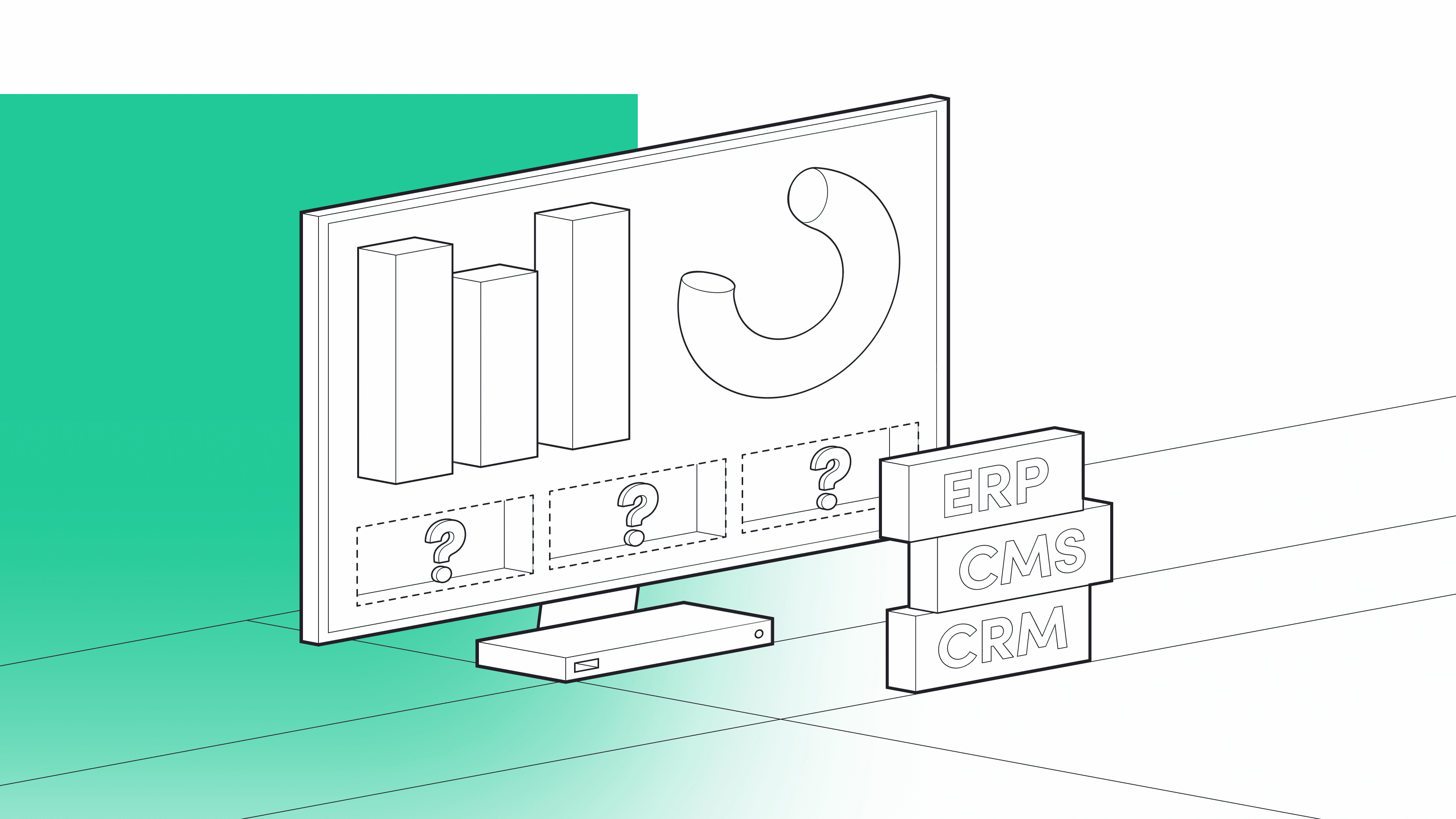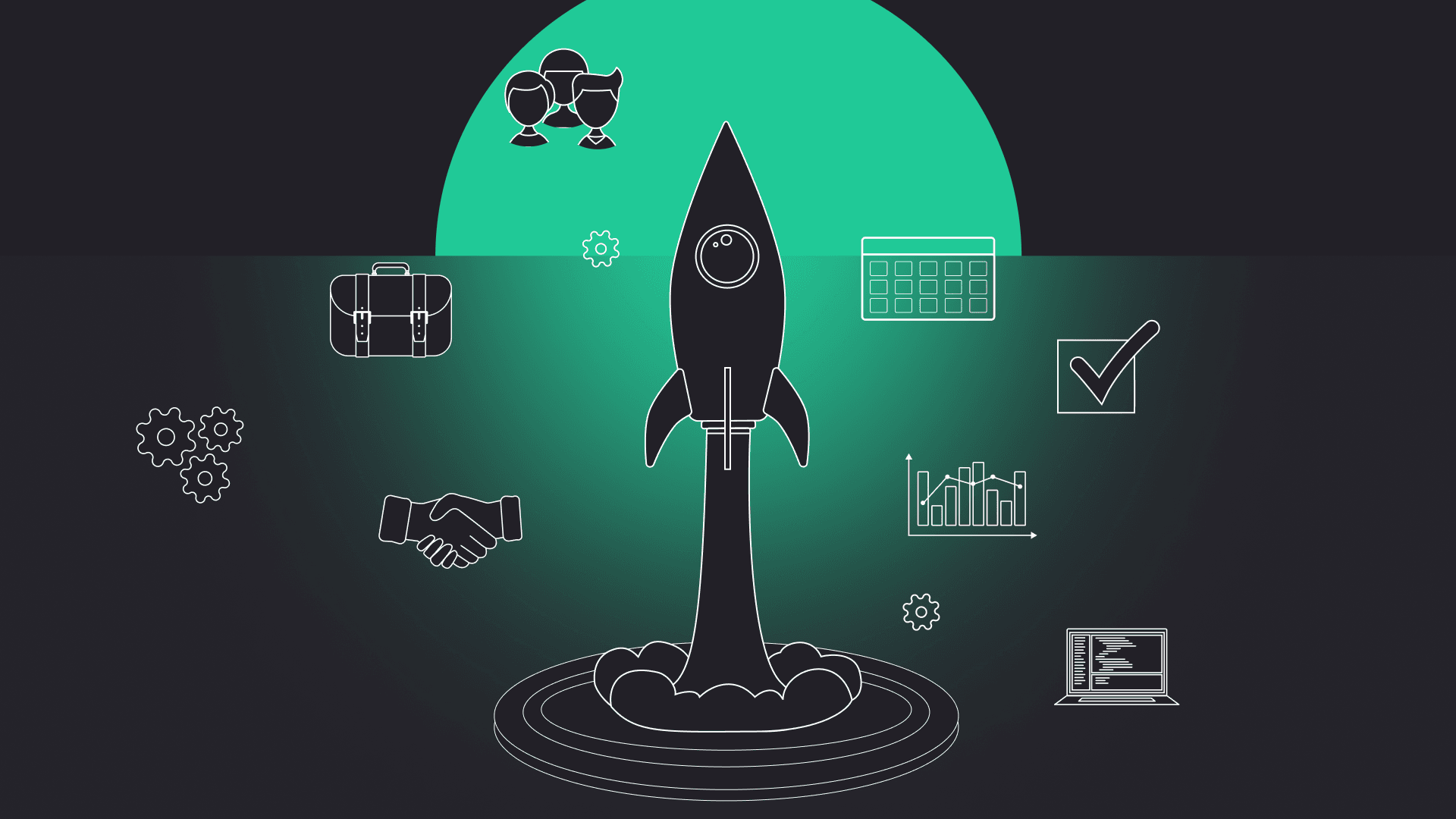Project management has evolved significantly over the past few years. We all see it. There’s an increasing demand for project managers who would lead the teams and carry out projects throughout the stages of product development. Different project management methodologies have become more popular, while product teams and project managers are looking for new ways to improve the process.
Why is it so important? Because, nowadays, there are many project risks involved. There’s a probability of wasted resources, not releasing products on time, a higher likelihood of team burnout, and more. So choosing the proper project management framework for the software development life cycle has become a priority for many businesses.
What’s a software development methodology? How to choose one that’s right for you? You’ll also learn about the most common types of Agile methods (Kanban, Scrum, Scrumban), their benefits, challenges, and how they influence the software development workflow. Let’s get started!
What’s the status of methodologies?
Which project management methodology is the top pick of many? Yup, you guessed it. It’s one of the frameworks based on Agile. Some of them use it all the way, while others implement some aspects of it. According to the 15th State of Agile Report made by Digital.ai, 86% of software development companies have adopted some sort of Agile methodology principles and practices, which is quite a lot, I’d say.
But throughout the years, there were many other software development methodologies, frameworks and approaches introduced. These include Rapid Application Development methodology (RAD), Feature-Driven Development (FDD), Lean Software Development, and more. Because, after all, there’s no one-size-fits-all methodology. But all of them, have one goal only – helping the development team release digital products better, faster, and bugless.
Why should I follow software development methodology?
Software development methodologies are developed for enhancing the benefits of both the product team and the customer. They can significantly decrease inefficiency and more accurately estimate completion timelines than traditional methodologies. Without the method, the project may be a waste of time, investment, and effort with risks of developing a poor application that won’t perform well in the market.
How to pick the right methodology?
Choosing the best framework to adopt for the team members and project can be challenging. So to make that process easier, let’s list a few factors that you should consider.
- Determine the priorities
What do you want to achieve with this project? What are your business’ main goals? Recognizing these priorities may help you choose the proper framework. - Identify budget restraints
Some methodologies encourage flexibility throughout the project (which applies not only to features but also budget), while others prefer fixed terms. Make sure to consider that. - Figure out the main problems & obstacles
Each methodology has something unique to offer and focuses on different aspects of project management. Some may help you with prioritizing features, other focus on organizational factors. - Keep in mind team values
It’s no use in following some trendy methodology blindly if it isn’t working for the people in the team. Define your company culture and the organization’s values. Because, in the end, it’s about people who work on the project. Does this approach align with your business values? Thanks to this, it’ll be easier to implement it into the development process.


Have a project in mind?
Let’s meet - book a free consultation and we’ll get back to you within 24 hrs.
3 types of software development methodologies
Once you know the factors you should pay attention to while choosing the approach, let’s differentiate the 3 most common types in the IT industry.
Kanban
Kanban is a framework that’s based on Agile principles. It’s a visual framework that uses a kanban board to organize tasks, show deadlines of given tasks, and who’s responsible for completing them. Why is it so popular? Because it implements agile and lean principles to encourage transparency of the work being done (thanks to a kanban board) and improve communication in a team.
Advantages
- easy to understand & implement,
- reduces waste,
- boosts team flexibility.
Disadvantages
- the board can become too complex,
- it should be updated regularly,
- no timeframe.
Scrum
On the other hand, this framework is known for its iteration planning. Namely, sprint planning, sprint retrospective meeting, daily review meetings. It’s yet another one of the Agile software development methodologies, focusing on a value-driven approach. That’s why it’s excellent for managing complex software development projects.
The Scrum team aims to deliver some iteration of the final project at the end of each sprint to evaluate and improve for the next one. Scrum is a framework that makes even the biggest, most intimidating projects feel more manageable. It also focuses on continuous improvement — since the Scrum team (led by a person appointed as the Scrum Master) is focused on learning from the previous sprint.
Advantages
- regular feedback,
- short iterations,
- responsive to changes.
Disadvantages
- scope creep,
- requires experience and team involvement.
Scrumban
We talked about Scrum with its iterative approach and Kanban, that’s more of a visual development method. These two work well in some projects, but they do have some setbacks and limitations (as we have seen before). So why not work out something in-between? And there it is: Scrumban is the perfect hybrid of Scrum and Kanban. Let��’s talk about it in more detail and review its pros and cons.
Scrumban is the merge of Scrum’s structure and Kanban’s visualization and pull system, making it a universal approach to workflow management. Thanks to this, Scrumban is a better choice for maintenance or continuous development projects. Why? Short iterations and prioritization allow the team to adapt their tasks to the current situation easily. Plus, it allows reacting quickly to sudden problems in an already launched app.
As for the people involved in the project, there are no roles or limits to the people in Scrumban teams. It’s not the job of the Product Owner or Project Manager to assign the tasks to a specific person, but the team members choose the task themselves. During the planning, they figure out (together with the team) which tasks are due, and then, the self-organizing team decides how a given task is approached. There’s more freedom in this matter. And it ensures a smooth workflow.
How to plan
The planning is on-demand and depends on the number of tasks left in the “to do” section of the board. Once it passes a certain number of tasks, the planning is triggered. Also, in Scrumban, there’s something called “bucket size planning” with 3 phases of the plan (1-year, 6-month, 3-month buckets) which gives the team the possibility to plan long-term.
The board
The basic Scrumban board that visually represents the team’s progress consists of 3 columns: “to do”; “doing”; and “done”. With the team’s progress in the project, those columns can be altered or expanded. For example, the team can add a testing column, design column, or even design review.
One of the Scrumban framework features is the work in progress limit (WIP in short) that ensures that each team member works on only one task at a time. This allows for more team efficiency (no multitasking). But apart from WIP limits, there’s also a To-Do limit – it restricts the number of tasks in the to-do section. It’s a trick for boosting productivity during planning meetings.
Let’s take a look at the list of its pros and cons.
Advantages
- short iterations,
- on-demand planning,
- lead and cycle time,
- transparency of tasks.
Disadvantages
- no specific round time (it’s hard to estimate the time of delivering a specific feature),
- it’s about the number of tasks and not their span (sometimes 10 tasks may take a month, other times merely a week),
- lack of consistent meetings, such as planning or retro (asynchronous communication may pose a problem, especially for a developer who works in more than one project).
Our choice for the software development process
At Gorrion, we use both Scrum and Scrumban for our projects.
Scrum is a great option for newly-established projects that are before release. It allows us to work on a project in iterations (sprints), we get to discuss the product’s versions regularly (thanks to daily calls), and it’s very flexible. Plus, it involves transparency and open communication, which aligns with our company culture.
Scrumban, on the other hand, is a better option for continuous product delivery and fast-paced projects, in which bugs have to be handled right away. Because of short iterations, the team can adapt to the evolving environment in no time. Also, all the work progress can be monitored thanks to a visual board (whiteboard and stick-notes or JIRA tool for remote work).
Final words on project management methodologies
One thing is sure – implementing a methodology is vital for the software development teams and the development process. It brings order to the project and facilities project management. However, no one methodology works for everyone. Each company/team should choose the method that fits them best and iterate it so that it works as well as possible with their processes.
I hope this article sheds light on the project management methodologies and shows you how important they’re, especially in custom software development. At Gorrion, we have a lot of experience working with different clients and methodologies. Thanks to that, we can adapt the method to the given project so that the organization of work will be as efficient as ever.
If you’re still hesitating and wondering what’s best for you, or maybe you want some advice, contact us and let’s have a chat!


Have a project in mind?
Let’s meet - book a free consultation and we’ll get back to you within 24 hrs.
Michalina is an experienced Product Owner and Product Manager with a passion for technology and an extensive track record in the software industry. She's led both projects and delivery teams in startups and scaleups, where some would say there are many challenges, but she calls them opportunities. Right now, she's revolutionizing biofuel industry with the Bioledger team. It's an inspiring journey towards making our planet a better place and she couldn't be more excited to be a part of it. As a PO/PM Team Lead at Gorrion, she has two major goals. One is to make the company better by improving its project management standards. The other is to remove obstacles that face her team, so that her fellow PO/PM team members can thrive in their professional growth. She's headstrong on breaking down barriers and fixing things, so that her team can focus on what they do best: delivering exceptional projects and exceeding all expectations. Personally, Michalina loves specialty coffees, her dog Milka, and tennis.



